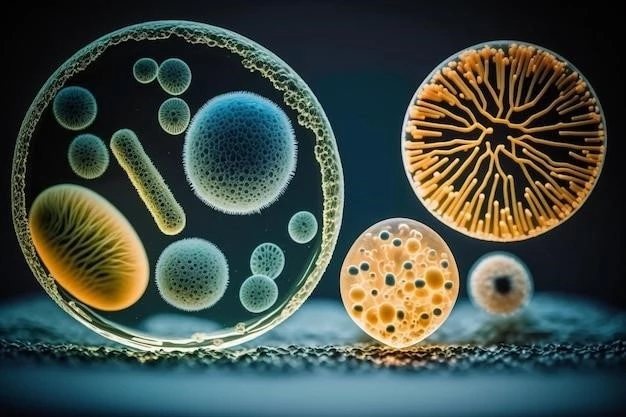Dentinogenesis Imperfecta
Dentinogenesis Imperfecta is a hereditary genetic syndrome that affects dental enamel, causing abnormal discoloration, brittle teeth due to a mutation in the dentin protein. This article provides an overview, details on the genetic component, symptoms, diagnosis, treatment options, challenges, and future research on this condition.
Overview of Dentinogenesis Imperfecta
Dentinogenesis Imperfecta, also known as hereditary opalescent dentin, is a rare genetic disorder affecting the teeth. It is characterized by the abnormal development of dental enamel and dentin, leading to tooth discoloration, translucency, and weakened structure. This condition can manifest in primary and permanent dentition and may result in notable oral health issues.
The genetic mutation associated with Dentinogenesis Imperfecta affects the dentin-forming cells during tooth development. This alteration disrupts the normal production of dentin, resulting in teeth that are prone to fractures, wear, and decay. Individuals with this syndrome often face challenges with chewing, speaking, and maintaining proper oral hygiene due to the fragile nature of their teeth.
People with Dentinogenesis Imperfecta may experience aesthetic concerns due to the abnormal coloration and shape of their teeth. The teeth may appear blue-gray, amber, or brown in color, depending on the severity of the condition. In addition to the visible effects, individuals with this disorder may also encounter pain or sensitivity related to their dental abnormalities.
Understanding the underlying genetic and developmental factors of Dentinogenesis Imperfecta is crucial for accurate diagnosis and effective management. While this condition presents lifelong challenges, advancements in dental care and genetic research offer hope for improved treatments and outcomes for individuals affected by this rare dental syndrome.
Genetic Component of Dentinogenesis Imperfecta
Dentinogenesis Imperfecta is primarily caused by genetic mutations that affect the formation of dentin, a key component of teeth. These mutations are often inherited in an autosomal dominant pattern, meaning that a person only needs one copy of the mutated gene to develop the condition.

The genetic mutations associated with Dentinogenesis Imperfecta impact the production of dentin matrix proteins, particularly dentin sialophosphoprotein (DSPP). DSPP plays a crucial role in the mineralization and structural integrity of dentin. Mutations in the DSPP gene can lead to abnormal dentin formation, resulting in the characteristic features of Dentinogenesis Imperfecta.
While most cases of Dentinogenesis Imperfecta are inherited, spontaneous mutations can also occur. In these instances, the genetic mutation arises for the first time in an individual, with no family history of the condition. Sporadic cases of Dentinogenesis Imperfecta may present challenges in diagnosis and genetic counseling due to the absence of familial patterns.
Genetic testing can help identify specific mutations responsible for Dentinogenesis Imperfecta, allowing for more accurate diagnosis and potentially informing treatment strategies. Understanding the genetic basis of this condition is essential for genetic counseling, family planning, and developing targeted therapies to address the underlying causes of this hereditary dental syndrome.
Symptoms and Characteristics of Dentinogenesis Imperfecta
Dentinogenesis Imperfecta presents a range of symptoms and characteristics that affect the appearance, structure, and function of the teeth. Common signs of this condition include opalescent or translucent teeth, discoloration ranging from blue-gray to amber or brown hues, and teeth that are prone to breakage and wear.
Individuals with Dentinogenesis Imperfecta may experience dental sensitivity to temperature variations, sweet or acidic foods, and pressure during chewing. The enamel in affected teeth may be thin and easily damaged, leading to increased susceptibility to cavities and other dental problems.
In severe cases, Dentinogenesis Imperfecta can cause misshapen or small teeth, malocclusion (a misalignment of the teeth), and delayed tooth eruption. The compromised structural integrity of the teeth can result in difficulties with eating, speaking, and maintaining proper oral hygiene practices.
Children with Dentinogenesis Imperfecta may exhibit symptoms early in life, with primary teeth showing signs of enamel abnormalities and discoloration. As the condition progresses into adolescence and adulthood, permanent teeth may also display characteristic features, impacting both the aesthetic appearance and functionality of the dentition.
Managing the symptoms of Dentinogenesis Imperfecta requires a comprehensive approach that addresses both the cosmetic and functional aspects of the condition. Regular dental care, customized treatment plans, and ongoing monitoring by dental professionals are essential to preserving oral health and quality of life for individuals affected by this genetic dental disorder.
Diagnosis of Dentinogenesis Imperfecta
Diagnosing Dentinogenesis Imperfecta involves a combination of clinical evaluation, dental imaging, and genetic testing to confirm the presence of this hereditary dental disorder. Dentists and dental specialists may observe key characteristics such as discoloration, translucency, and abnormal teeth structure during a visual examination.
Dental imaging techniques, including X-rays (radiographs) and 3D imaging, can help assess the internal structure of the teeth, identify enamel and dentin abnormalities, and evaluate the extent of dental damage associated with Dentinogenesis Imperfecta. These diagnostic tools provide valuable insights into the severity and progression of the condition.
In cases where Dentinogenesis Imperfecta is suspected to have a genetic basis, molecular genetic testing can be performed to identify specific mutations responsible for the disorder. Genetic testing involves analyzing DNA samples to pinpoint genetic variants associated with Dentinogenesis Imperfecta, enabling personalized treatment approaches and genetic counseling.
It is crucial to differentiate Dentinogenesis Imperfecta from other dental conditions with similar symptoms, such as amelogenesis imperfecta, which affects enamel development, or dentinal dysplasia, which impacts dentin structure. Accurate diagnosis allows for appropriate management strategies tailored to the unique characteristics of Dentinogenesis Imperfecta.
Early detection and diagnosis of Dentinogenesis Imperfecta play a vital role in initiating timely interventions to address oral health challenges and prevent complications associated with this genetic dental syndrome. Collaborative efforts between dental professionals, geneticists, and patients are essential in the diagnostic process and ongoing management of this rare dental disorder.
Treatment Options for Dentinogenesis Imperfecta
The management of Dentinogenesis Imperfecta aims to address the unique dental challenges presented by this hereditary condition. Treatment approaches focus on enhancing the strength, functionality, and appearance of the teeth while promoting optimal oral health and quality of life for affected individuals.
Dental interventions for Dentinogenesis Imperfecta may include the placement of crowns or veneers to protect and strengthen weakened teeth, restore proper tooth structure, and improve aesthetics. These custom-made dental restorations can enhance the durability of the affected teeth and support normal chewing and speaking functions.
In cases where tooth sensitivity is a concern, desensitizing treatments or special toothpaste formulated for sensitive teeth may be recommended to alleviate discomfort and enhance oral comfort. Fluoride treatments and dental sealants can also help strengthen enamel, reduce the risk of cavities, and improve overall dental health in individuals with Dentinogenesis Imperfecta.
Orthodontic treatment, such as braces or aligners, may be necessary to address malocclusion or misalignment issues resulting from Dentinogenesis Imperfecta. Orthodontic interventions not only improve the alignment of the teeth but also enhance oral function and aesthetics, contributing to a healthy and harmonious smile.
Regular monitoring by dental professionals is essential for individuals with Dentinogenesis Imperfecta to identify and address any developing issues promptly. Routine dental check-ups, cleanings, and preventive care play a crucial role in maintaining oral health, monitoring the progression of the condition, and adjusting treatment strategies as needed.
Collaboration between dentists, orthodontists, and other specialists ensures a comprehensive and individualized approach to managing Dentinogenesis Imperfecta, addressing both the functional and cosmetic aspects of the condition. By combining preventive measures, restorative treatments, and ongoing care, individuals with Dentinogenesis Imperfecta can preserve their dental health and well-being in the long term.
Challenges and Complications Associated with Dentinogenesis Imperfecta
Individuals with Dentinogenesis Imperfecta face a variety of challenges and potential complications related to the condition’s impact on dental health and overall well-being. The structural abnormalities and fragility of the teeth can result in difficulties with chewing tough or hard foods, leading to dietary restrictions and potential nutritional concerns.
Tooth sensitivity and discomfort associated with Dentinogenesis Imperfecta may affect individuals’ quality of life, making it challenging to consume hot or cold foods and beverages comfortably. These sensitivity issues can also cause difficulties with oral hygiene practices, as individuals may experience discomfort while brushing or flossing their teeth.
The aesthetic consequences of Dentinogenesis Imperfecta, such as tooth discoloration and malformed teeth, can have psychosocial implications, impacting self-esteem and confidence. Individuals may feel self-conscious about the appearance of their teeth, leading to emotional distress and social challenges in various aspects of their lives.
Managing the ongoing dental care needs and treatment interventions for Dentinogenesis Imperfecta can be physically and financially burdensome for affected individuals and their families. The need for specialized dental care, including custom restorations, orthodontic treatments, and frequent dental visits, may pose challenges in terms of accessibility and affordability.
Complications of Dentinogenesis Imperfecta can include an increased risk of dental caries (cavities) due to enamel abnormalities and weakened tooth structure; Untreated cavities can progress rapidly in individuals with this condition, leading to infections, pain, and potential tooth loss if not promptly addressed by dental professionals.
By addressing the challenges associated with Dentinogenesis Imperfecta proactively and collaboratively, individuals can better manage the condition’s impact on their oral health and overall quality of life. Comprehensive care, emotional support, and access to specialized dental services are essential in helping individuals with Dentinogenesis Imperfecta navigate the complexities of this genetic dental disorder.
Future Research and Developments in Dentinogenesis Imperfecta
Ongoing research into Dentinogenesis Imperfecta focuses on advancing our understanding of the genetic mechanisms underlying this rare dental disorder and exploring innovative treatment approaches to improve outcomes for affected individuals. Genetic studies aim to identify additional genes and mutations associated with Dentinogenesis Imperfecta, allowing for more precise genetic testing and personalized therapies.
Developments in regenerative dentistry offer promising avenues for restoring damaged dentin and enamel in individuals with Dentinogenesis Imperfecta. Tissue engineering techniques, such as stem cell therapy and biomaterial scaffolds, may provide new opportunities for enhancing tooth structure and function, potentially reducing the need for traditional restorative treatments.
Advancements in dental materials and technologies are driving the development of durable and aesthetic dental solutions tailored to the unique needs of individuals with Dentinogenesis Imperfecta. Novel materials with improved strength, biocompatibility, and longevity are being explored to enhance the longevity and performance of dental restorations in affected patients.
Collaborative efforts between dental researchers, geneticists, clinicians, and industry partners are essential for accelerating progress in the field of Dentinogenesis Imperfecta research and translating scientific discoveries into clinical practice; Multidisciplinary approaches that integrate genetics, biomaterials, and dental expertise hold great promise for improving diagnosis, treatment, and long-term outcomes for individuals affected by this genetic dental syndrome.
Patient advocacy groups and support networks play a vital role in raising awareness about Dentinogenesis Imperfecta, promoting research initiatives, and fostering collaboration among stakeholders in the dental and scientific communities. By engaging patients, caregivers, and advocates, research efforts can be guided by the needs and perspectives of those directly impacted by this hereditary dental condition.
Looking ahead, continued investment in research, education, and clinical innovation will drive progress in understanding Dentinogenesis Imperfecta and advancing therapeutic options for individuals living with this challenging genetic syndrome. By harnessing the power of interdisciplinary research and patient-centered care, the future holds promise for improved outcomes and enhanced quality of life for individuals affected by Dentinogenesis Imperfecta;
